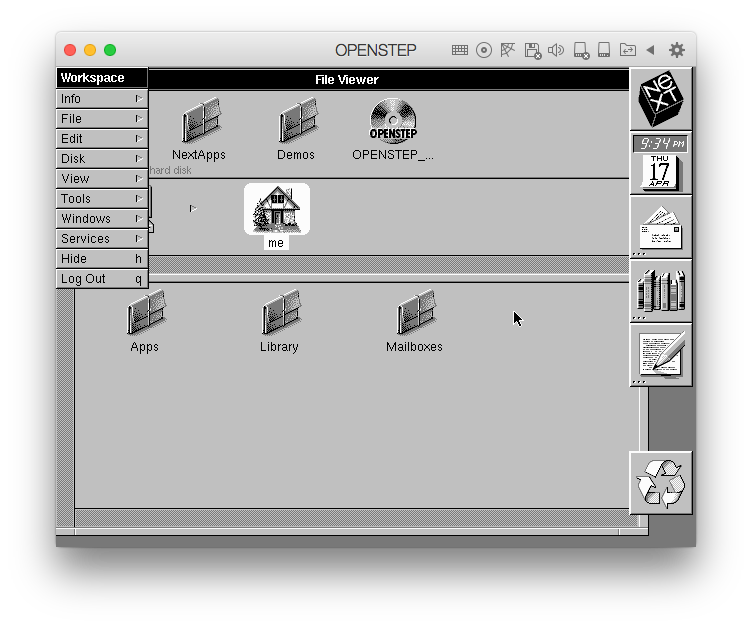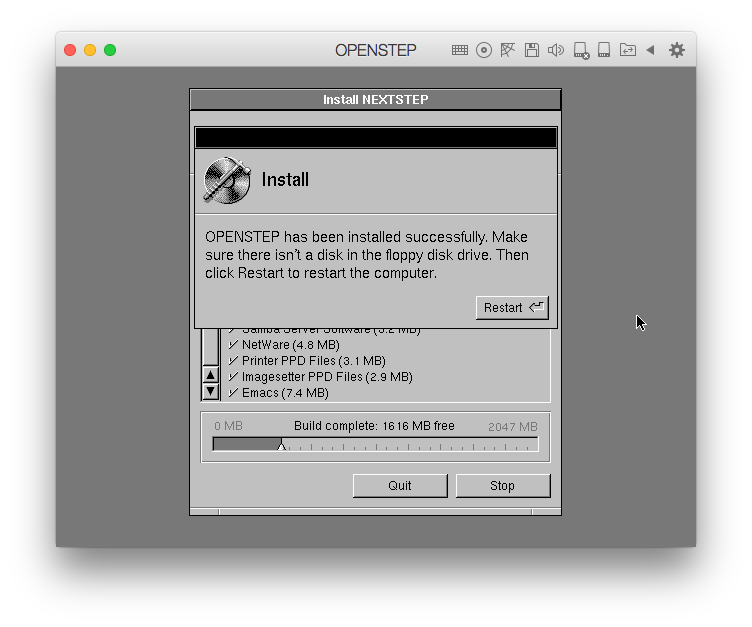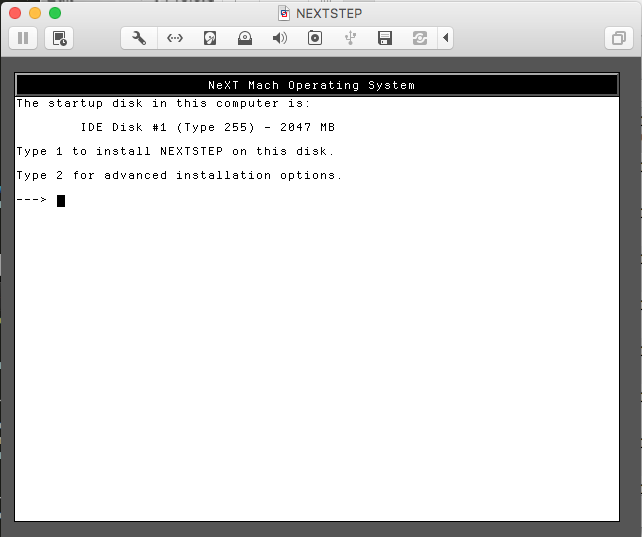.but you're missing drivers. Click on Disk, then Eject inside the Workspace menu. If there is any complaint about something being unreadable, simply. Mount ne2k+os42patch4+vmwarefb.iso into the CD drive (you can eject the installation iso). Click on the newly visible CD icon. Copy the contents. Fortunately, Virtual Box – which is cross-platform between Windows, macOS, and Linux and completely free – does support the proper VESA mode and works great for the installation of OpenStep. Still, there are some quirks when setting up your VirtualBox VM initially. OPENSTEP 4.2, Intel version. NeXTStep was the operating system created for the NeXT computer (a Motorola 68K based machine), and later ported to to the Intel x86/PC platform when NeXT shifted focus from being a hardware company to a software company. OPENSTEP is the descendant of NeXTStep, although technically 'OPENSTEP' refers to.
A company I worked for sent me along with two senior colleagues to a shop which was showing both the NeXT cube and the NeXTStep system ported on x86 hardware, and the experience was totally worth the early morning (late night) wake up plus following 5 hours train trip; it was about 1993 or 1994. The cube was absolutely gorgeous looking, and being then myself an Amiga fan its Motorola CPU to me was something to be proud of.The demonstration wasn't the usual smoke and mirrors wrapped in corporate speech: the guy wrote some code on the cube and built a small GUI program to show the development system and libraries, then he took the same code, copied it to a x86 machine nearby running the ported OS and built it to obtain the same program. Just wow! Back then running different hardware and CPU architectures meant sort of living on a different planet, and we just saw someone building a space bridge between two distant planets, making software development much easier.
We eventually got back with some promo material and the idea that we were did indeed experience a milestone in the IT development, but the price tag was something a very small company could not invest for research alone, so they abandoned the idea.
About WindowMaker: I loved it and used it extensively both at home and work in the early 2k. In one project I had to build the simplest possible user interface for roughly 50 remote stations hundreds of kilometers away where the users were mostly completely new to computers, therefore the risk of clogging the support seat with panic calls was really high.Luckily WindowMaker and its kiosk mode came to rescue: I built a really basic desktop screen in which the user could not alter the system in any way, providing buttons for simple tasks like running a browser, fetch or send mail using a client, ask for remote support, print documents we sent through scp or mail attachments, shutdown/reboot etc.An interesting challenge was easing the support login since all those terminals had dynamic IP, and we simply couldn't ask to the operators to start a reverse ssh from their side, but thanks to some Ruby scripts in the background, each remote machine would obtain and send its public IP and some more information to the local server in which a Ruby+Glade GTK app would add them to a list, so that the support operator would click on a station name and the ssh to that machine would open in seconds.In the end it worked so well that the support colleague spent most of her time twiddling thumbs.
From GNUstepWiki
Openstep Installation Guide Installation
This page is intended as a collection of guides for users.
Contents |

Installing GNUstep
Installation can be easy or complex, depending on the system you use. If you encounter problems that aren't discussed here, please ask for help on the mailing lists.
- Instructions on how to install on BSD or Linux.
- Comprehensive build guide for GNUstep on GNU/Linux.
Configuration

- User Defaults (GUI) (Back)
Advanced installation
Using GNUstep
- Filesystem Layout (PDF)
- GNUstep Users' FAQ (PDF)
Other Info
- News and info:
- Freshmeat ->Freecode Effective 2014-06-18 Freecode is no longer being updated (content may be stale).
- GNUstep en español - Noticias e información
- Projects:
- Desktop Environments
- Backbone - GNUstep Desktop project
- Étoilé - GNUstep based user environment
- GAP - GNUstep Application Project
- Nextspace - GNUstep based Desktop project
- Live CDs
- GNUSTEP Live CD - based on Debian
- ALT Linux based (i586/x86_64, BIOS/UEFI, considerable number of GNUstep/Étoilé apps):
- GNUstep starterkit - updated quarterly (as of June 2014) using stable package branch
- Regular GNUstep - updated weekly using unstable development branch
- Desktop Environments
- Developer sites:
- Developers - List of developers
- GNUstep.it - Italian developer site
- Collaboration World - home to GNUMail, Affiche and more
Openstep Installation Guide Kit
